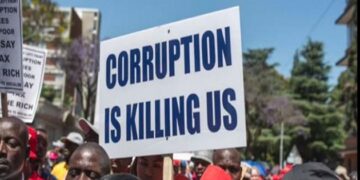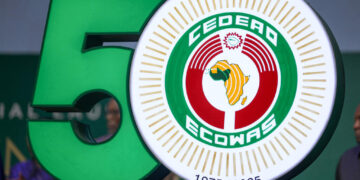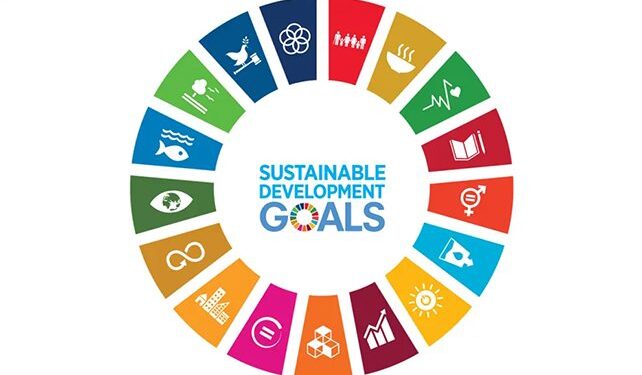1.Introduction
From the 1950s, the concept of development has seen persistent revision. Western economic thought initially dominated the development paradigms, which identified progress with economic growth, monitored in large part by GDP and manufacturing output (Hosseini, 2003). This linear theorising of development, informed by modernisation theory, understood development as moving through a tradition-to-modernity cycle (Alden et al., 2019). By the 1970s, though, this narrowed framing faced significant criticism mainly from intellectuals like Amartya Sen who shifted the emphasis to capabilities and freedom, arguing that growth was actually about making more possible for people to lead the kind of lives they wish (Fukuda-Parr & Cid-Martinez, 2019). This framing acted as the basis for the Human Development Index (HDI) which came into being in the 1980s and 1990s and combined income, education as well as life expectancy into a more non-income-based indicator of growth (Sagar & Najam, 1998).
By the early 2000s, the debate had become more fluid, recognising that development also needs to deliver on environmental sustainability, governance, inequality and social inclusion (Mensah, 2019). Global development goals became the new framing: first, the Millennium Development Goals (MDGs) (2000–2015), focused above all on improving lives in Sub-Saharan Africa; and then the Sustainable Development Goals (SDGs) (2015–2030), globalising the agenda with 17 inter-linked goals. Today, progress is increasingly shaped by degrowth discourses, limits of the planet, and politics of measurement, not just challenging what is achieved, but also how progress is defined and who gets to define it (Brand et al., 2019; Büchs & Koch, 2019).
Ghana has shown strong commitment to both the MDGs and SDGs. The goals have been integrated into national development plans, with institutional frameworks such as the Inter-Ministerial Coordinating Committee on the SDGs and the SDG Budgeting System. Voluntary National Reviews (VNRs) have been submitted, and Ghana is often praised as a proactive African country in SDG alignment. However, with just five years to the 2030 deadline, significant challenges remain. This article reflects on Ghana’s progress toward the SDGs, identifies key achievements and persistent challenges, and makes a case for the urgent need to localise SDG indicators and implementation strategies. It argues that the continued dominance of standardised global indicators, often blind to informality, cultural specificity, and spatial inequality undermines the effectiveness of SDG implementation in Ghana and similar Global South contexts. The article further interrogates whether such global frameworks risk reinforcing dependence on Western models, and proposes a roadmap for 2030 and beyond that centers contextualised, people-driven, and nationally owned development planning.
2.Ghana’s Progress Toward the SDGs: A Review of Achievements and Persistent Challenges
2.1 SDG 1 (No Poverty) and SDG 2 (Zero Hunger)
Ghana has in the past integrated poverty reduction and food security into its national development agenda, beginning with the Millennium Development Goals (MDGs), when the two targets were integrated into one target to eradicate extreme poverty and hunger. The very first strategy was premised on the natural interlinkage between poverty and hunger and set the stage for SDG 1 and SDG 2 of the 2030 Agenda. Ghana made substantial strides under MDG 1. The 2010 MDG Report of the Ghana Statistical Service published in 2013, indicated that the country was overall on track to eliminate national and rural and urban extreme poverty. Although recent poverty trend data are restricted, economic figures report considerable advancement. From 1991 to 2012, incidence of poverty in Ghana was reduced by half from 52.6% to 21.4%, largely due to persistent economic growth (Ackah & Aryeetey, 2012). Poverty is nevertheless deeply entrenched in the Northern, Upper East, and Upper West regions (Whitehead, 2006). For instance, the Ghana Statistical Service estimated that it would be very difficult to cut extreme poverty by as high as 41.8 percentage points in certain regions (Ghana Statistical Service, 2013). Consequently, Ghana initiated significant social protection interventions, the most notable being the Livelihood Empowerment Against Poverty (LEAP) initiative under the National Social Protection Strategy (NSPS). LEAP provides cash transfers to the poorest of the poor, with over 200,000 beneficiaries reached to date, targeting the bottom 20% of the population (Bawelle, 2016). This has been a key contributor to the mitigation of the effects of abject poverty, supplemented by efforts towards financial inclusion and extensive economic growth.
2.2 Health and Education as Foundations for Human Development
Complementing efforts in poverty and food security, Ghana has made significant progress in health as well as education. Initiatives such as the National Health Insurance Scheme (NHIS) have expanded access to health services and also reduced financial barriers. Disease control efforts targeting malaria, HIV/AIDS, and tuberculosis have also gained momentum through preventive, curative, and awareness-based strategies. In the educational sector, the country has recorded significant progress, with less than 1% of children out of primary school and only 10% out of lower secondary school by 2019. The introduction of free secondary education has further boosted enrollment. Despite this progress, learning outcomes remain a concern. While pre-primary enrollment reached 99% in 2014, only 22% of primary pupils demonstrate proficiency in mathematics and 37% in reading (ActionAid, 2020). Ghana’s performance on the Human Development Index remains commendable, with scores of 0.968 and 0.978 in health and education, respectively (UNDP, 2024). However, despite this progress, gender disparities persist. This is because women in Ghana are 33% less likely to access the same opportunities as men, with a gender gap index score of 0.672 in 2022. Political as well as economic empowerment indicators for women remain particularly low.
2.3 Environmental Sustainability and Urban Resilience (SDG 6, 11, 13, 14, 15)
Ghana’s rapid economic growth has come at a heavy environmental cost. The country has serious environmental protection and urban sustainability issues. Land degradation loses Ghana over US$500 million annually, and deforestation incurs losses of approximately US$400 million annually. Ghana lost five million hectares of forest cover between 2001 and 2015 (Srivastava & Pawlowska, 2020). Illegal small-scale gold mining (galamsey) has contributed to the environmental damage, contaminating rivers with mercury and involving health costs of an estimated US$240 million. Coastal erosion also threatens the low-lying areas, with Ghana losing an estimated 2.7 million square meters of coastline annually. Both communities and cultural sites like Cape Coast and Elmina are at risk from these threats. Overfishing, especially of small pelagic fish, is depleting marine resources and could ruin up to 500,000 jobs (Srivastava & Pawlowska, 2020). In water and sanitation, Ghana has achieved 88% access to basic water services and 42% to safely managed sources. Sanitation remains a problem, with only 25% having access to basic facilities (United Nations, 2023). Unhygienic sanitation is responsible for thousands of deaths annually due to water-related diseases. While Ghana has potentials for both local energy generation as well as system strengthening (SDG 7), there must be more targeted action to take advantage of the potentials.
3. Gaps in the indicators
The global Sustainable Development Goals (SDGs) framework relies on standardised indicators to measure and compare progress across nations. While this approach has value in ensuring accountability and facilitating international benchmarking, it risks erasing the very socio-spatial particularities that shape development outcomes in countries like Ghana. The reliance on uniform metrics, developed largely from global institutions as well as modeled on formal economies and highly regulated systems, tends to neglect the complexities of informal systems, which are central to everyday life in many parts of the Global South. One of the most striking examples is the way access to transport is measured. Global SDG indicators often rely on the presence of paved roads or formal public transit networks within a certain radius. In the Ghanaian context, however, such measures grossly underestimate actual mobility. The majority of urban dwellers, especially in low-income communities, rely on informal and semi-formal systems such as trotros (minibuses), shared taxis, and unregistered motorbike services (commonly called okada). These networks though decentralised, loosely governed, and sometimes stigmatised serve as the backbone of urban mobility. Yet they are systematically excluded from official datasets, giving the false impression that large segments of the population lack access to transport, or that mobility services are underdeveloped.
Similarly, global indicators for housing and urban development under SDG 11 (Sustainable Cities and Communities) struggle to account for the vibrancy, adaptability, and density of informal settlements. In Ghana, particularly in urban areas such as Accra, Kumasi, and Tamale, informal housing arrangements are not simply a sign of poverty, they reflect a dynamic process of self-built urbanism, social negotiation as well as spatial adaptation. However, because these spaces often exist outside the legal planning regime, they are marked as “slums” and thus treated as failures in the global reporting system. This not only delegitimise the urban agency of millions but also creates data invisibility, where entire populations are present on the ground but absent from policy dashboards. Furthermore, the informal economy, which constitutes over 80% of Ghana’s employment, is barely acknowledged within global indicators for decent work (SDG 8) or economic growth. From market women, street vendors to artisans and informal transport workers, the majority of Ghana’s working population operate outside the scope of formal contracts, labour protections as well as taxation. Yet global measurement frameworks tend to prioritise formal wage employment, overlooking the precarious but productive labor that sustains many livelihoods.
The over-reliance on global indicators also sidelines community-led and participatory data collection initiatives that could offer more granular and contextually appropriate insights. In recent years, civil society organisations, such as the Ghana Statistical Service’s collaboration with NGOs and grassroots urban networks, have attempted to fill this gap through community mapping, household surveys as well as shadow reporting. However, these efforts often remain marginalized in official reporting systems, seen as supplementary rather than central to SDG tracking. At the core of this critique lies a deeper epistemological question: whose knowledge counts in defining and measuring development? The dominance of top-down, technocratic indicators risks reproducing a development model that is blind to diversity, informality, and improvisation, hallmarks of survival and innovation in many African contexts. As the 2030 deadline approaches, there is growing recognition that development indicators must be more sensitive to place, culture, and informality. Without a shift toward localised and co-produced indicators, Ghana and indeed many countries in the Global South, risk being misdiagnosed in global assessments. Worse still, the invisibility produced by these indicators can lead to poor resource allocation, misguided interventions, and further marginalisation of vulnerable communities. Thus, the limitations of global indicators are not merely technical, they are deeply political, shaping which lives are seen, valued, and improved under the banner of sustainable development.
4. Conclusion
Ghana’s commitment to the Sustainable Development Goals has been clear and commendable, but the pathway to achieving them has revealed deeper tensions between global aspirations and local realities. While some progress has been made, especially in education, health, and poverty alleviation, the standardised metrics used to measure development often fail to capture the nuances of life in Ghana, where informality, cultural identity, and spatial inequality shape how development unfolds. As a result, national efforts risk being misrepresented, misdirected, or undervalued.
Additionally, poeverty and inequality are exacerbated by the unfair world trading system that has seen economic growth not being consistent or translated effectively into poverty reduction. High youth unemployment and limited industrialisation and inadequate infrastructure limits potential for economic development. Carbon trading and lack of climate resilience have deepened climate vulnerabilities. Additionally, debt overhangs and financing gaps remain a key challenge for meeting targets by 2030.
Moving forward, it is critical that Ghana asserts greater ownership over its development agenda by crafting indicators, strategies, and institutions that are responsive to its unique context. This means recognising informality as a legitimate system, integrating cultural values into planning, and resisting external models that reinforce dependency. The road to 2030 and beyond, must be paved not only with global commitments but with locally grounded actions. For Ghana to truly leave no one behind, development must be reclaimed as a sovereign and situated process, one that values lived experience as much as global benchmarks.
Reference
Ackah, C., & Aryeetey, E. (2012). Globalization, Trade and Poverty in Ghana. IDRC.
ActionAid,. (2020). The bedrock of inclusion: Why investing in the education workforce is .. actionaid.org. June 17, 2025. https://actionaid.org/sites/default/files/publications/Global_report%20final.pdf
Alden, C., Large, D., & Mendez, A. (2019). The Western Way of Development: A Critical Review. Governing China in the 21st Century, 19-38. https://doi.org/10.1007/978-981-13-7232-2_2
Bawelle, E. B. G. (2016). Impact of Livelihood Empowerment against Poverty Programme in Ghana: The Case of Wa West District. International Journal of Social Science Research, 4(2), 24. https://doi.org/10.5296/ijssr.v4i2.9415
Brand, U., Muraca, B., Pineault, É., Sahakian, M., Schaffartzik, A., Novy, A., … Görg, C. (2021). From planetary to societal boundaries: an argument for collectively defined self-limitation. Sustainability: Science, Practice and Policy, 17(1), 264–291. https://doi.org/10.1080/15487733.2021.1940754
Büchs, M., & Koch, M. (2019). Challenges for the degrowth transition: The debate about wellbeing. Futures, 105, 155-165. https://doi.org/10.1016/j.futures.2018.09.002
Fukuda-Parr, S., & Cid-Martinez, I. (2019). Capability Approach and Human Development. The Palgrave Handbook of Development Economics, 441-468. https://doi.org/10.1007/978-3-030-14000-7_13
Ghana Statistical Service ,. (2013). 2010 Population and Housing census Report. Millennium Development Goal in Ghana. www2.statsghana.gov. https://www2.statsghana.gov.gh/docfiles/2010phc/MDG%20report%20(24-10-13).pdf
Hosseini, H. (2003). Why Development is More Complex Than Growth: Clarifying Some Confusions. Review of Social Economy, 61(1), 91–110. http://www.jstor.org/stable/29770193
Mensah, J. (2019). Sustainable development: Meaning, history, principles, pillars, and implications for human action: Literature review. Cogent Social Sciences, 5(1). https://doi.org/10.1080/23311886.2019.1653531
Sagar, A. D., & Najam, A. (1998). The human development index: A critical review. Ecological Economics, 25(3), 249-264. https://doi.org/10.1016/s0921-8009(97)00168-7
Srivastava , S., & Pawlowska, A. E. (2020). Ghana: Balancing economic growth and depletion of resources. blogs.worldbank.org. June 17, 2025. https://blogs.worldbank.org/en/africacan/ghana-balancing-economic-growth-and-depletion-resources
UNDP,. (2024). Rich countries attain record human development, but half of the .. www.undp.org. June 17, 2025. https://www.undp.org/press-releases/rich-countries-attain-record-human-development-half-poorest-have-gone-backwards-finds-un-development-programme
United Nations ,. (2023). UN Ghana Water, Sanitation and Hygiene Support Programme .. ghana.un.org. June 17, 2025. https://ghana.un.org/en/224267-un-ghana-water-sanitation-and-hygiene-support-programme Whitehead, A. (2006). Persistent poverty in North East Ghana. The Journal of Development Studies, 42(2), 278–300. https://doi.org/10.1080/00220380500405410






























